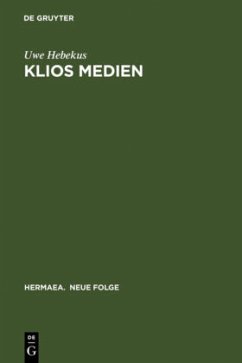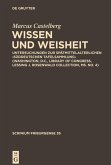The subject of this volume is historicist practice in the perception of history and the development that superseded it. Both Ranke and Droysen as well as Fontane in his texts on the war of 1870/71 assimilate their descriptive procedures to 19th-century public historical culture, which was based on a number of medial innovations. But by drawing upon the contemporary psychopathology of trauma, the romantic poetics of the arabesque and aesthetic elements in early photography, Fontane's late narratives indicate the limitations of this culture and map out a new texture of historiography.
Die Arbeit untersucht Praktiken der Vergegenwärtigung von Geschichte in der historistischen Geschichtswissenschaft und in literarischen Texten Fontanes im Bezug auf die Geschichtskultur des 19. Jahrhunderts. An Werken Rankes und Droysens wird gezeigt, daß in der historistischen Historie jene auf Geschichte bezogenen öffentlichen Wahrnehmungsgewohnheiten als Maßstab wirken, wie sie vor allem durch medientechnische Innovationen, etwa das Panorama, etabliert worden waren. Die Praktiken der Repräsentation erweisen sich dabei aber auch als Aktualisierung geschichtstheologischer Denkfiguren und einer rhetorischen Tradition von "Topik als Kulturmodell". Eng bezogen auf die historistische aisthesis der Geschichte sind die autobiographischen Texte Fontanes, die den Deutsch-Französischen Krieg (1870/71) ins "Buch der Geschichte" eintragen wollen. An ihnen wird aber auch deutlich, daß die kulturelle Modernität dieses Krieges unter den Vorgaben der historistischen aisthesis nicht mehr darstellbar ist. Von dem Befund solcher Darstellungsresistenz aus werden späte Erzähltexte Fontanes gelesen, vor allem »Die Poggenpuhls« und »Der Stechlin«. Unter Rückgriff auf ästhetische Elemente der frühen Photographie, auf die zeitgenössische Psychopathologie des Traumas und auf die romantische Poetik der Arabeske decken sie die Wahrnehmungsgrenzen der historistischen Geschichtskultur auf und entwerfen alternative Formen einer Textur der Historie.
Die Arbeit untersucht Praktiken der Vergegenwärtigung von Geschichte in der historistischen Geschichtswissenschaft und in literarischen Texten Fontanes im Bezug auf die Geschichtskultur des 19. Jahrhunderts. An Werken Rankes und Droysens wird gezeigt, daß in der historistischen Historie jene auf Geschichte bezogenen öffentlichen Wahrnehmungsgewohnheiten als Maßstab wirken, wie sie vor allem durch medientechnische Innovationen, etwa das Panorama, etabliert worden waren. Die Praktiken der Repräsentation erweisen sich dabei aber auch als Aktualisierung geschichtstheologischer Denkfiguren und einer rhetorischen Tradition von "Topik als Kulturmodell". Eng bezogen auf die historistische aisthesis der Geschichte sind die autobiographischen Texte Fontanes, die den Deutsch-Französischen Krieg (1870/71) ins "Buch der Geschichte" eintragen wollen. An ihnen wird aber auch deutlich, daß die kulturelle Modernität dieses Krieges unter den Vorgaben der historistischen aisthesis nicht mehr darstellbar ist. Von dem Befund solcher Darstellungsresistenz aus werden späte Erzähltexte Fontanes gelesen, vor allem »Die Poggenpuhls« und »Der Stechlin«. Unter Rückgriff auf ästhetische Elemente der frühen Photographie, auf die zeitgenössische Psychopathologie des Traumas und auf die romantische Poetik der Arabeske decken sie die Wahrnehmungsgrenzen der historistischen Geschichtskultur auf und entwerfen alternative Formen einer Textur der Historie.








